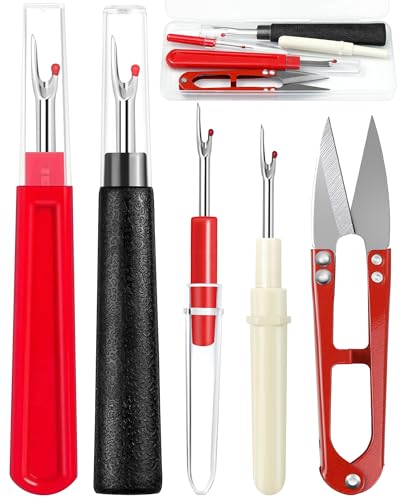Sewing a notched lapel for jackets can seem daunting, but I promise it’s easier than it looks! With a bit of patience and the right techniques, you can elevate any jacket from ordinary to extraordinary. Notched lapels add a touch of sophistication and style, making them a must-have for tailored garments.
Materials Needed
Sewing a notched lapel requires specific materials to achieve a polished look. Gathering the right fabric and tools enhances the overall sewing experience.
Fabric Selection
Choosing fabric significantly affects the notched lapel’s appearance and durability. Opt for structured materials like wool, tweed, or cotton blends, which provide a crisp finish. For a lighter jacket, consider linen or lightweight cotton. Ensure the fabric has enough body to hold the lapel’s shape, while also allowing for smooth sewing. A fabric weight of 8 to 12 ounces per yard works well for most jacket styles.
Tools Required
Having the right tools simplifies the process of sewing notched lapels. Gather the following items for optimal results:
- Sewing Machine: Ensure your machine has a zigzag stitch option for finishing edges.
- Scissors: Use sharp fabric scissors for precise cutting.
- Pins: Keep a collection of straight pins to secure fabric layers before sewing.
- Tailor’s Chalk or Fabric Markers: Mark notches clearly for accurate alignment.
- Measuring Tape: Use a flexible measuring tape to ensure precise fabric measurements.
- Interfacing: Select fusible interfacing to add structure to the lapel.
- Iron and Ironing Board: Pressing fabric during the process provides crisp lines.
Having these materials and tools at hand ensures a smoother experience when sewing your notched lapel jackets.
Preparing the Jacket
Preparing the jacket is crucial for achieving a professional finish when sewing a notched lapel. Attention to detail during this stage sets the foundation for a polished garment.
Pattern Cutting
Pattern cutting involves precise preparation to ensure the lapel fits correctly. I start by selecting a well-fitting jacket pattern, focusing on the notched lapel design. Next, I trace the pattern onto my fabric using tailor’s chalk, marking notches and other key points. I cut the fabric carefully, ensuring to include seam allowances. For added accuracy, I sometimes use weights or pins to keep the pattern in place while cutting.
Tailoring Adjustments
Tailoring adjustments refine the fit and overall look of the jacket. I examine the muslin or mock-up of the jacket to identify any necessary modifications. If the shoulders feel tight, I adjust the shoulder seams. If the body is too loose, I take in the side seams. I also check the length of the lapel, ensuring it aligns with my design vision. Making these adjustments ensures that the jacket maintains a structured silhouette, perfectly complementing the notched lapel.
Sewing the Notched Lapel
Sewing a notched lapel enhances the jacket’s sophistication and style. Following precise techniques results in a polished look.
Creating the Notch
Creating the notch requires careful planning and execution. First, I mark the notch’s position on the lapel using tailor’s chalk, ensuring it’s centered and aligns with the jacket’s design. Then, I cut into the fabric, making a straight cut from the edge of the lapel to the notch point. After cutting, I trim the fabric seam allowance at the notch corners to reduce bulk, providing a crisp turn when I flip the lapel right side out. It’s also essential to press the notch carefully, shaping it for a clean finish.
Attaching the Lapel
Attaching the lapel involves precise alignment and secure stitching. I position the lapel pieces right sides together with the body of the jacket, aligning edges carefully. Using pins, I secure the lapel in place to avoid shifting during sewing. I then sew along the edges with a consistent seam allowance, ensuring I catch all layers. After sewing, I trim any excess fabric and grade the seams for optimal thickness, allowing the lapel to lay flat. Finally, I press the lapel into place, shaping it to accentuate its structured silhouette.
Finishing Touches
The finishing touches enhance the overall appearance of the notched lapel, creating a professional look. Attention to detail in this step provides a polished and refined appearance.
Topstitching Techniques
Topstitching adds definition and a tailored look to the notched lapel. It involves sewing a decorative stitch close to the seam line.
- Choose the Right Thread: Select a thread color that matches the fabric or provides a subtle contrast. This choice can dramatically impact the lapel’s appearance.
- Use a Straight Stitch: Employ a straight stitch for a clean finish. Adjust the stitch length for a bolder look or finer detail.
- Guide the Fabric: Keep the fabric aligned and use the presser foot as a guide. Maintaining consistent distance from the seam enhances the overall symmetry.
- Reinforce the Corners: Backstitch at the corners for added durability. This technique ensures the stitches remain intact after frequent use.
- Finish with a Neat Edge: Trim any excess threads to keep the appearance sharp and tidy.
By applying these topstitching techniques, the lapel gains a crispness that elevates the entire jacket.

Pressing the Lapel
Pressing the lapel shapes and sets the fabric, making it look polished.
- Gather Necessary Tools: Prepare an iron, a pressing cloth, and a tailor’s ham. These items help achieve the ideal shape and finish.
- Start with a Low Heat: Adjust the iron to the fabric type, using a lower setting for delicate fabrics. Test on a scrap piece first to ensure no damage occurs.
- Use a Pressing Cloth: Place the pressing cloth over the lapel to protect the fabric. This step minimizes the risk of shine or scorch marks.
- Mold the Lapel: Place the lapel over the tailor’s ham and press firmly without sliding the iron. Using the ham allows you to shape the lapel’s curves effectively.
- Set the Shape: Allow the lapel to cool in the pressed position to set the shape. Avoid handling it until it’s completely cool to maintain the form.
Following these pressing techniques ensures the notched lapel retains its structure and crisp finish, contributing to a sophisticated jacket appearance.
Conclusion
Sewing a notched lapel can truly elevate your jacket-making skills. It’s all about taking your time and enjoying the process. I’ve found that the right materials and tools make a huge difference in achieving that polished look.
Don’t be afraid to experiment with different fabrics and techniques as you refine your skills. Each jacket you create will be a step towards mastering this stylish detail.
So grab your supplies and start sewing. You’ll be amazed at how a well-crafted notched lapel can transform your garment into something truly special. Happy sewing!

















